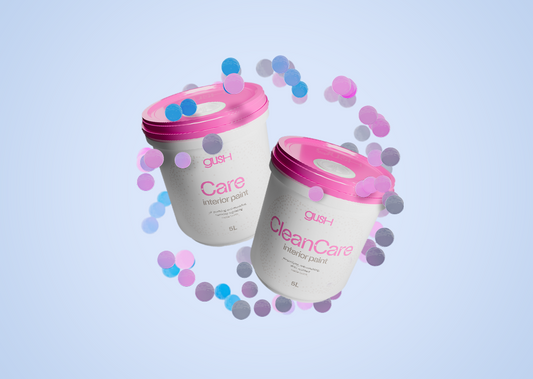Science
Effects of high formaldehyde levels on our cognitive functions
Discover how high formaldehyde exposure affects your health and cognitive functions and learn how you can protect yourself indoors.

Discover how high formaldehyde exposure affects your health and cognitive functions and learn how you can protect yourself indoors.
What does formaldehyde do to my cognitive functions?
This common indoor air pollutant can affect our health and happiness, but there’s a way to stop it.
Experiencing dizziness, headaches and nausea in a room, only to feel better when you step outside? That’s likely indoor air pollution you’re experiencing. There are various types of pollutants, but today, we’re looking at formaldehyde. It’s toxic and especially common indoors, as it comes from many sources. Even our own bodies produce formaldehyde (thankfully in really small amounts). Formaldehyde inhalation has negative effects on our health and can affect our cognitive functions if exposed to it for too long. But what are these cognitive effects, and how can we protect ourselves indoors? Let’s find out.

Sources of formaldehyde indoors.
Formaldehyde is a common type of Volatile Organic Compound (VOC), which has high toxicity and is a major contributor to indoor air pollution. It is found in many indoor products, which accounts for its prevalence in your home. From healthcare to construction, automobiles to consumer goods, many industries use formaldehyde for its anti-bacterial and preservative functions. It also improves the yield in chemical processes.
Because of the amount of time we spend indoors (up to 90% of our time), indoor exposure contributes up to 98% of the integrated exposure of formaldehyde inhalation.
How does this happen? Formaldehyde is used in building materials – think cement, wood, tiles, and the like. Almost all of the furniture and structures in your home contain traces of formaldehyde. These items, as well as building works, release formaldehyde as a gas in a process called off-gassing. And it can take a long time to disperse.
Off-gassing of furniture can take anywhere from 72 hours to 20 years, depending on the product. During that time, formaldehyde (and other types of pollutants) are being released into your home and inhaled into your body.
The average adult, when resting, inhales and exhales about 7 or 8 liters of air per minute. That totals about 11,000 liters of air per day. If your air contains high formaldehyde content, this level of exposure is certainly unhealthy. Although formaldehyde metabolises in our bodies quickly, constant exposure to higher levels means we’re exposed to formaldehyde faster than we can break it down.

What are cognitive functions?
Cognitive functions serve a critical role in everyday individual and social behavior. Our brains’ activity enables our intellectual abilities and responses to external stimuli, so we can perform mental tasks like:
-
Memorizing & remembering
-
Assessing stimuli and decision making
-
Language and communication
-
Learning
-
Concentration & focus
-
Problem-solving & planning
-
Abstract thinking & complex idea comprehension
-
Creativity
As you can imagine, we perform most of these functions on a daily basis; whether at school, at home, at work, at play, or in social settings. With higher cognitive function, more complex mental tasks can be performed, allowing us to comprehend, plan, discern and work at a higher level. For indoor environments such as homes, schools, and airplanes, decrements in cognitive function and decision-making have significant impacts on productivity, learning, and safety.
The effects of formaldehyde on cognitive function.
Formaldehyde inhalation irritates our respiratory tract and lines the mucous membrane. It can weaken our sense of smell. It can cause systemic toxicity and travel to the brain, impairing brain cell metabolism and slowing cellular development. When our cognitive function is affected, we start to see drops in our performance. We might lose focus quickly, experience headaches, forget details and feel anxious more often. And the drop can be significant. A study showed that, after comparing the cognitive functions of people working in spaces with green versus unhealthy indoor air quality, the difference in cognitive scores was 61%.
Over prolonged periods of exposure, formaldehyde can cause brain disease and brain disorders. It also increases the risk of cancer. Your respiratory system can deteriorate with chronic formaldehyde inhalation, causing coughing, wheezing, chest pains and bronchitis. As such, it’s important to keep our indoor spaces clear of formaldehyde and to maintain healthy indoor air quality as much as we can. But being such a prevalent VOC, how do we keep it out of our homes?

Clean air is important. Here’s how to get it.
To keep your home’s air clear of formaldehyde, you’ll need a solution that’s working constantly. Gush paints break down formaldehyde particles upon contact, effectively turning your walls into air-purifying surfaces. Tested to remove 99% of formaldehyde within 21 hours, this feature works with and without light, so Gush paints can break down formaldehyde 24/7. You get healthy, safe air all the time, even if you recently did renovation works.
Gush paints don’t only clear formaldehyde. It also breaks down mold spores, bacteria and harmful odours. Made with a toxic-free, odourless formulation, it doesn’t release VOCs into the air during painting, unlike traditional paints. Complemented with the use of air purifiers and ventilating your space often, you can rest easy knowing your home’s formaldehyde levels are safely low. Safe, clean air from the moment you first step into your new home.
By enabling your walls and ceiling, the largest surface area in your spaces, to become constant air purifiers, you can breathe easy. Go with Gush paints to enjoy healthy air quality, and be assured that indoor air pollution isn’t affecting you or your loved ones, every time you’re home.








